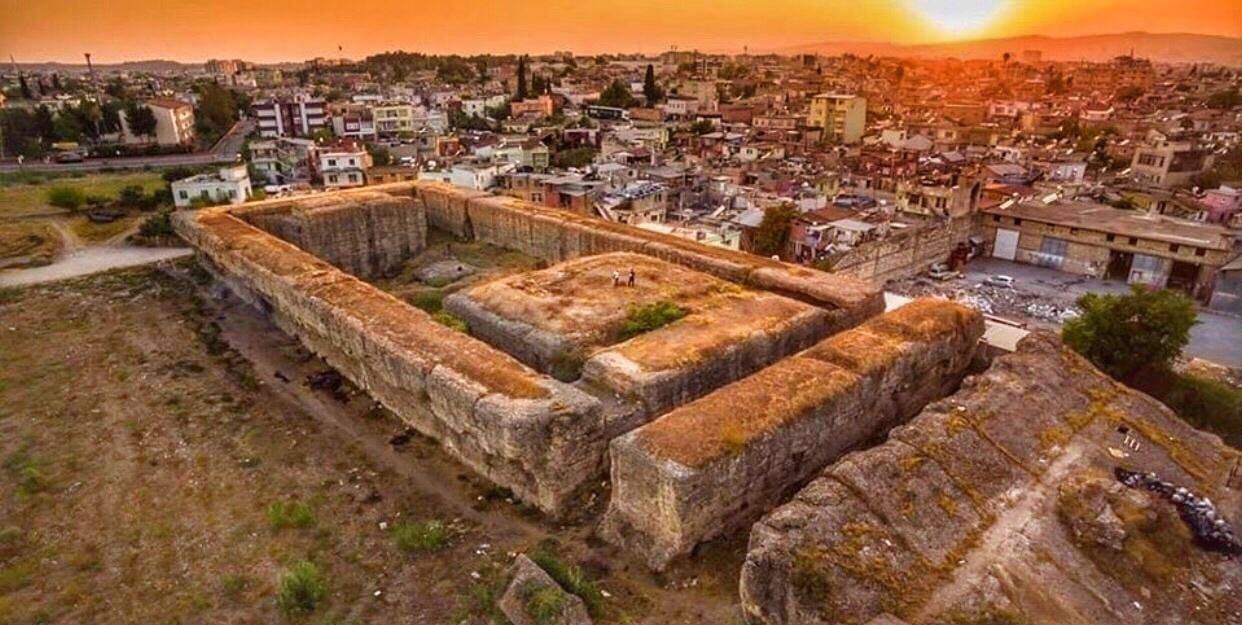



In addition to its economic wealth, Tarsus has attracted attention as a settlement where various religions and beliefs have lived together since the past. Naturally, this rich cultural mosaic has allowed many important religious buildings to coexist. One of these is the Roman temple, which is the oldest temple of Tarsus that has survived to the present day and is known by the people as Donuktaş and Dönüktaş. Donuktaş Roman Temple, located in the Tekke District of Tarsus, is the largest temple in the ancient world with its 133.50 m x 60.50 m and 20 m high columns surrounded by (10 x 21). Resembling a large rock mass at first glance, the structure was built in the 2nd century AD during the reign of the Roman Emperor Hadrian. According to the information obtained from the coins of Tarsus, it was understood that the temple was built for the emperor cult of Hadrian and was the common temple of the Roman State of Cilicia. The temple has attracted the attention of many researchers since the 18th century. The discovery made by French Consul Gillet in 1836 with dynamite destroyed the structure to a great extent. French Orientalist V. Langlois, who came to Tarsus in 1852, likened the building to Sardanapal's Tomb and drew the plan and engraving of the building. In his book Voyage Dans La Cilicie Et Dans Les Montagnes Du Taurus published in 1861, Langlois included this information and drawings. The first serious examination of the building was made by Robert Koldewey in 1890. Koldewey, who visited Tarsus for one day, drew the plan of the temple and published the reconstruction of the building in the same year. Koldewey was the first archaeologist to realize that this remains were a huge temple. During the excavations carried out by Prof Dr Nezahat Baydur from the Tarsus Museum and Istanbul University between 1982-1992, the plans and sections of the building were drawn and new information was obtained about its architecture and function. The building was built almost in the northwest - southeast direction, but it has a rectangular plan. It is 133.50 m long and 60.50 m wide from outside and the height of the walls is 8 m in average, and the wall thickness is 6.50 m. Its visible mass is compacted pebble stone. Large blocks of limestone were also used in the construction of the outer wall. A large number of marble slabs were found during the excavations and they were used for the lining of the walls. Again, during Gillet's excavations, a giant marble finger belonging to the cult statue was found, but it is not known where this find is today. The plan of the temple is similar to the Temple of Apollo in Didim. It is possible to see the imitation of giant columns with a diameter of 2.10 m and a height of 20 m, grooved, tapering upwards, and Corinthian capitals decorated with acanthus leaves, located on the temple, whose upper architecture is completely made of marble, today in the Tarsus Museum. Finally, in 2012, Germany's Marburg University launched a new research project on the temple. In the project, financed by the DFG (German Research Fund), the existing foundations and structural elements of the building were measured in detail by modern methods such as laser scanning, photogrammetry and geophysics, and it was understood that the building was built for the Hadrian imperial cult in AD 130. Since Tarsus's goal at that time was to pass the seven wonders of the world, they established the largest temple of the ancient world in Tarsus.
View on Google Maps Back